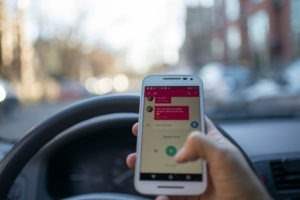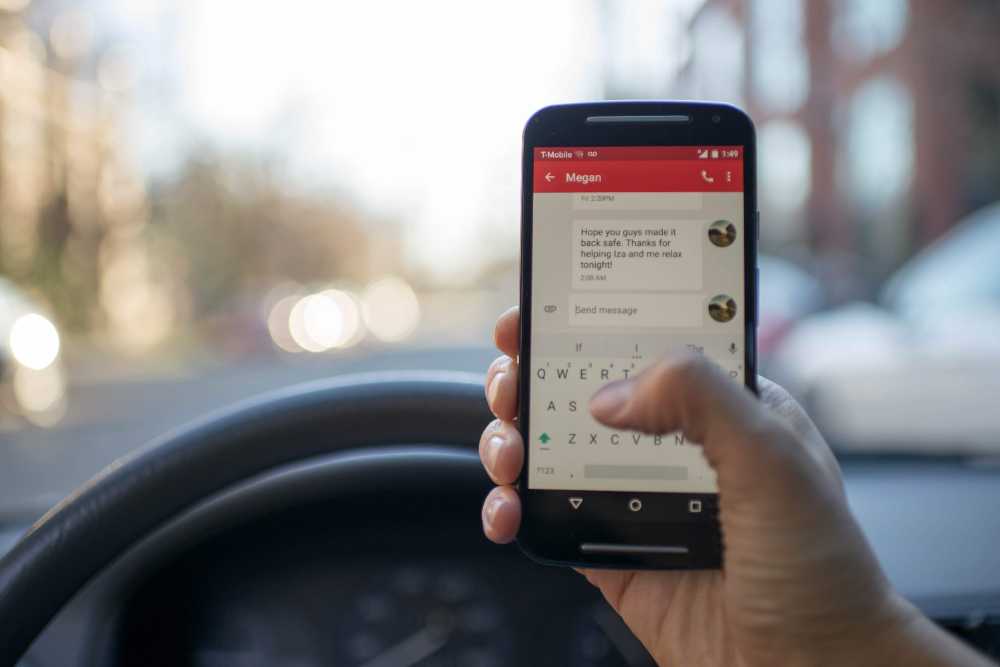
Texting is, without a doubt, one of the most dangerous things a driver can do. It (and other visual-manual subtasks like dialing) increases the risk of crashing by three times, according to a study by the Virginia Tech Transportation Institute (VTTI). It’s important to talk with your teenagers about the misconceptions, consequences, and dangers of texting and driving in such a way that it effectively impresses upon them.
Explain the Myth of Multitasking
Your teen may think he or she can effectively text and drive simultaneously. Many teens and adults alike are under the false impression that the human brain is capable of effectively multitasking behind the wheel. It’s not.
A person’s effectiveness and concentration fail miserably when the brain is presented with two stimuli of the same kind, e.g., two visual tasks such as driving and texting. Researchers at Ohio State University (OSU) found that when presented with two visual tasks, people’s ability to concentrate dropped by 50 percent, even though they think they have performed well. The study was published in the scholarly journal Computers in Human Behavior in 2012.
Communications professor Zheng Wang of OSU explained: “People’s perception about how well they’re doing doesn’t match up with how they actually perform.”
Find a Personal Injury Lawyer, Near Me
(855) 529-0269Explain the facts about our brains and the myth of multitasking to your teens. Kids have a hard time of taking our word for things, so show them a few research articles online and a couple of YouTube videos on multitasking fails. Do a few simple multitasking experiments together so they can see firsthand that it’s impossible to safely and effectively do two similar things at one time.
Reiterate the Deadliness of Distracted Driving
Texting and driving kills. Period. In 2011, over 3,300 people were killed in accidents that involved a distracted driver, and another 387,000 people were injured in crashes involving a distracted driver, reports the Centers for Disease Control and Prevention.
Share these facts with your kids. Show them online news articles of teens who have lost their lives in texting-related accidents. Offer a real-world visual of a scenario explained in the VTTI study to really help your teen understand the deadliness of distracted driving.
First, explain to your teen that every time she texts, her eyes leave the road for almost five seconds. Then, take her to a football field, let her have a grasp of the vastness of it. Finally, explain that if she were driving 55 miles per hour, it would be like driving the entire length of the field blindfolded down the highway. Disaster can happen in those precious seconds.
Set Rules and Make a Pact Together
Don’t make the mistake of assuming your teen is innocent; texting and driving is outrageously common amongst teens. A quarter of teens admit to reading or sending texts each time they drive, according to a University of Michigan study.
Click to contact Chalik & Chalik's personal injury lawyers today
First, it goes without saying that we need to set a good example for our kids and abide by all of the rules we lay down. Sit down together, set down some solid rules, and make a pact to drive cell phone-free. Make it crystal clear that talking on the phone and texting is an absolute no-no while driving. Provide consequences for breaking the rules, and then make sure to follow through.
Legal Help in Fort Lauderdale after a Texting-Related Accident
If you or your teen were injured in a car accident in Fort Lauderdale because someone was driving distractedly, you may have rights to financial compensation. To discuss your legal options, contact us at Chalik & Chalik. Call (855) 529-0269 to set up a consultation.
Call or text Chalik & Chalik
(855) 529-0269


